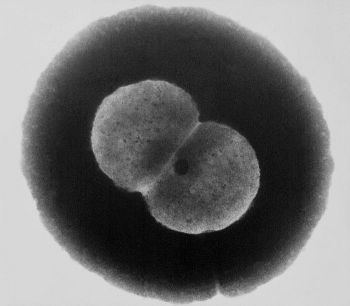 CDC ID#14493, Dr. Wiesner
CDC ID#14493, Dr. Wiesner- Neisseria are Gram-negative diplococci with their adjacent sides flattened.
- These organisms are aerobic, strongly oxidase-positive, have an oxidative metabolism, are susceptible to drying and are fastidious (growth is inhibited by free fatty acids).
- There are four types of N. gonorrhoeae based on the presence of fimbriae; T1, T2, T3 and T4.
- N. meningitidis is serotyped by the antigenic character of its capsular polysaccharide; several groups including A, B, C, 29E, W-135 and Y are recognized.